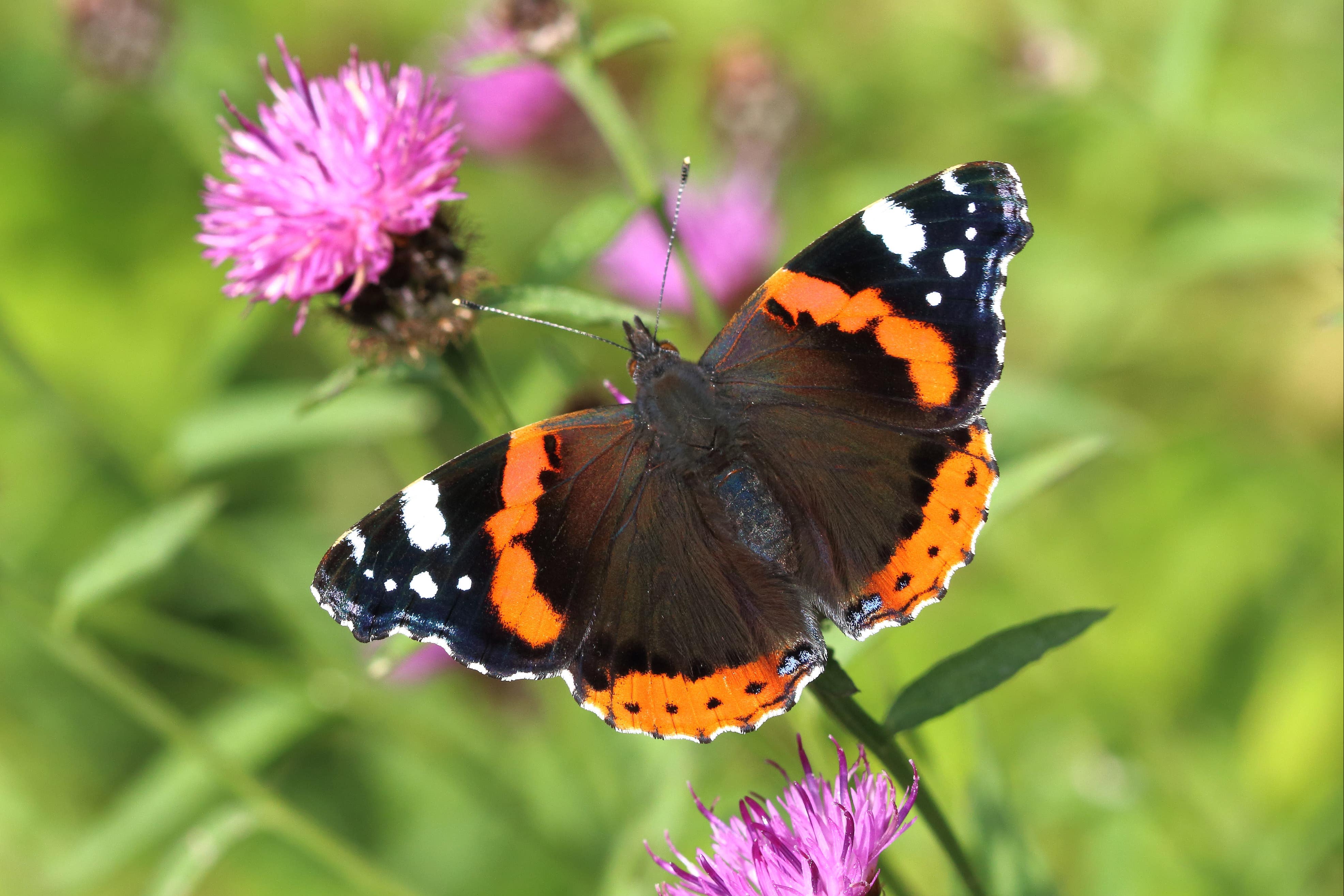Climate change driving migratory butterfly to stay in UK
Sightings of the red admiral have increased by more than 150,000 this summer compared with last year.

Your support helps us to tell the story
From reproductive rights to climate change to Big Tech, The Independent is on the ground when the story is developing. Whether it's investigating the financials of Elon Musk's pro-Trump PAC or producing our latest documentary, 'The A Word', which shines a light on the American women fighting for reproductive rights, we know how important it is to parse out the facts from the messaging.
At such a critical moment in US history, we need reporters on the ground. Your donation allows us to keep sending journalists to speak to both sides of the story.
The Independent is trusted by Americans across the entire political spectrum. And unlike many other quality news outlets, we choose not to lock Americans out of our reporting and analysis with paywalls. We believe quality journalism should be available to everyone, paid for by those who can afford it.
Your support makes all the difference.Climate change is causing a migratory butterfly to stay in the UK over winter and abandon its usual flight south, a citizen science project has revealed.
The red admiral normally travels up from continental Europe or North Africa in the spring and lays eggs in the British countryside, but many are now overwintering in southern England so their numbers in the UK have proliferated.
There is “no doubt” that climate change is the main driver behind this, the charity Butterfly Conservation has said.
Sightings of the red admiral increased by more than 150,000 between July 14 and August 2 2023 compared with the same period last year.
It is the number one most-observed butterfly, with more than 177,000 recordings in the Big Butterfly Count, a citizen science project where people enter their sightings online.
With global temperatures rising, it is likely that more red admirals will stay in the UK over winter, Butterfly Conservation said.
Dr Zoe Randle, senior surveys officer at the charity, said: “We’ve been surprised to see the red admiral taking the lead; however, with the increased frequency of warm weather, the UK may well become a permanent home for this species.
“The results so far show just how vital the Big Butterfly Count is. We couldn’t get the depth and breadth of data we’re collecting without the help of the general public.
“We’re calling on people across the UK to please get out for the count and record your butterfly sightings over the next few days.
“With climate change here to stay, we need people to take part more than ever before and help us understand how extreme weather is affecting our butterflies.”
More than one million butterfly sightings have been recorded in the Big Butterfly Count, with nearly 65,000 people adding some 90,000 records.
The count runs until August 6 and can be done all across the UK, with the charity offering guides on how to identify the butterflies.